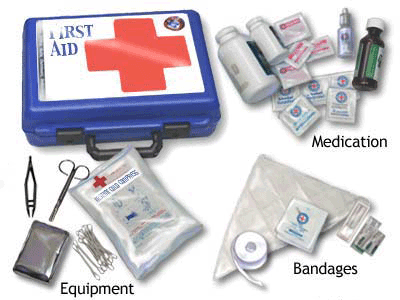Standard First Aid Course: Introduction
Learn CPR. For Life™



DEFINITION
First Aid is defined as the immediate medical assistance that’s administered to an injured or incapacitated victim prior to – or outside of – EMS or other medical attention such as ER. First Aid assistance includes a range of emergencies, from treatment of minor cuts, to burns, to serious injuries like fractures and head trauma.
Understanding basic First Aid and possessing appropriate skills will not only help you make good decisions under pressure, but may also save someone’s life.
The Good Samaritan Law(s) and “duty to act” responsibilities may vary greatly, not only by location but also by specific circumstances and other factors.
- If the victim is responsive, ask for permission before providing assistance (if the victim is unconscious or unable to respond, then permission is implied)
- If necessary, activate EMS by calling 911 or your local emergency dispatch
- If the victim is unconscious or incoherent, check them for medical alert tags
If the situation is actively unsafe, do not attempt care. If you or the victim are at risk, it is best to call EMS and wait for support to arrive.
Safety First
- Before attempting to administer First Aid to any victim, check to ensure that the scene is safe for both of you. If it is not, do not approach and call 911 instead.
- Always use Personal Protective Equipment (PPE) such as disposable gloves and preventive breathing barriers, if possible.
- If you suspect that a victim has suffered a spinal or neck injury, do not move or shake them.
General safety recommendations
- program emergency numbers into your phone (emergency contact, poison control center, family doctor, etc)
- install and maintain smoke and CO detectors
- maintain and know where your flashlights and fire extinguishers are
- keep medications, kitchen chemicals, and any toxic, hazardous, poisonous, or flammable materials out of children’s reach
- if firearms are present, ensure safe storage and handling
Proper and timely hand-washing is crucial to prevention of spread of germs and disease. If soap and water are not available, use hand sanitizers. To effectively clean your hands:
- wet your hands thoroughly
- use anti-bacterial soap
- rub hand vigorously for at least 20 seconds
- wash backs of hands and in between fingers
- rinse with running water until clean
- dry with a clean towel, paper towel, or air dryer
Personal Protective Equipment (PPE) such as disposable gloves, face shields, etc. minimizes the risk of exposure to blood and other bodily fluids. If the victim is bleeding, always wear gloves and protective eye wear when administering first aid. In fact, PPE should be utilized any time there a possibility of exposure to bodily fluids because it reduces the risk for blood-borne disease to the rescuer and the victim. When done, properly dispose of all used PPE as you would with any other biohazard waste.
A commercial First Aid Kit may be a smart investment but you can also make one yourself. A good First Aid Kit should be checked for expired or low running items and restocked periodically, and should always contain at least the following: 
- Sterile adhesive bandages in assorted sizes
- Sterile gauze pads in assorted sizes
- Hypoallergenic adhesive tape
- Scissors
- Tweezers
- Needle
- Ace bandage
- Moistened towelettes
- Antiseptic
- Thermometer
- Tongue blades
- Splints in assorted sizes
- Petroleum jelly
- Assorted sizes of safety pins
- Anti-bacterial soap
- Antibiotic ointment
- Latex gloves and face mask
- Sunscreen
- Aspirin and/or ibuprofen
- Ice Pack